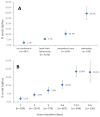Incidence of Scrub Typhus in Rural South India
- PMID: 40073309
- PMCID: PMC7617504
- DOI: 10.1056/NEJMoa2408645
Incidence of Scrub Typhus in Rural South India
Abstract
Background: Hospital studies suggest that scrub typhus is a leading cause of severe undifferentiated fever in regions across Asia where the disease is endemic, but the population-based incidence of infection and illness has been little studied.
Methods: We conducted a population-based cohort study to assess epidemiologic and clinical characteristics of scrub typhus in 37 villages in Tamil Nadu, India, where the disease is highly endemic. Study participants were visited every 6 to 8 weeks over a period of 2 years; a venous blood sample was obtained from those who had had fever since the last visit. A subcohort of participants underwent blood sampling to estimate the incidence of serologically confirmed Orientia tsutsugamushi infection.
Results: We systematically assessed 32,279 participants from 7619 households for acute febrile illness. During 54,588 person-years of follow-up, we observed 6175 episodes of fever. A blood sample was obtained in 4474 episodes (72.5%), of which 328 (7.3%) met the clinical case definition of scrub typhus (detection of IgM against O. tsutsugamushi on enzyme-linked immunosorbent assay [ELISA] or detection of O. tsutsugamushi on polymerase-chain-reaction assay). The incidence of clinical infection was 6.0 cases per 1000 person-years (95% confidence interval [CI], 4.8 to 7.5). A total of 71 clinical cases (21.6%) resulted in hospitalization (incidence, 1.3 events per 1000 person-years; 95% CI, 1.0 to 1.7). A total of 29 clinical cases (8.8%) were severe, as indicated by the presence of organ dysfunction or adverse pregnancy outcomes (incidence, 0.5 cases per 1000 person-years; 95% CI, 0.4 to 0.8). Among 2128 participants in the subcohort who provided samples at the beginning and end of a study year, the incidence of seroconversion independent of any symptoms was 81.2 events per 1000 person-years (95% CI, 70.8 to 91.6). The incidence of clinical infection was higher in older age groups than in younger age groups and higher among female participants than among male participants. By contrast, the age-adjusted rate of severe infection was similar among male and female participants. Among 5602 participants assessed at the start of the first year of the study, the seroprevalence of IgG as assessed with ELISA was 42.8% (95% CI, 35.8 to 50.2). IgG seropositivity at the beginning of years 1 or 2 did not protect against clinical illness during the subsequent year but was associated with less severe disease than IgG seronegativity.
Conclusions: We describe the burden of scrub typhus, including the incidence of asymptomatic infection, in a region of Asia where the disease is endemic. (Funded by the U.K. Medical Research Council; ClinicalTrials.gov number, NCT04506944.).
Copyright © 2025 Massachusetts Medical Society.
Figures




Comment in
-
Incidence of Scrub Typhus in Rural South India.N Engl J Med. 2025 Jun 26;392(24):2493. doi: 10.1056/NEJMc2505251. N Engl J Med. 2025. PMID: 40561546 No abstract available.
-
Incidence of Scrub Typhus in Rural South India. Reply.N Engl J Med. 2025 Jun 26;392(24):2493-2494. doi: 10.1056/NEJMc2505251. N Engl J Med. 2025. PMID: 40561547 No abstract available.
References
-
- Kelly DJ, Fuerst PA, Ching WM, Richards AL. Scrub typhus: the geographic distribution of phenotypic and genotypic variants of Orientia tsutsugamushi. Clin Infect Dis. 2009;48(Suppl 3):S203–30. 10.1086/596576[pii] (In eng) - PubMed
-
- Weitzel T, Dittrich S, Lopez J, et al. Endemic Scrub Typhus in South America. N Engl J Med. 2016;375(10):954–61. (In eng) - PubMed
-
- Abhilash KP, Jeevan JA, Mitra S, et al. Acute Undifferentiated Febrile Illness in Patients Presenting to a Tertiary Care Hospital in South India: Clinical Spectrum and Outcome. J Glob Infect Dis. 2016;8(4):147–154. doi: 10.4103/0974-777X.192966. 10.4103/0974-777X.192966JGID-8-147[pii] (In eng) - DOI - PMC - PubMed
Publication types
MeSH terms
Substances
Associated data
Grants and funding
LinkOut - more resources
Full Text Sources
Medical
Miscellaneous
